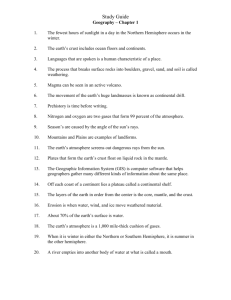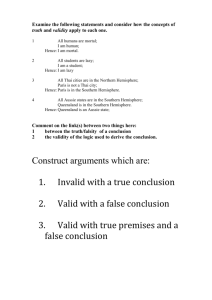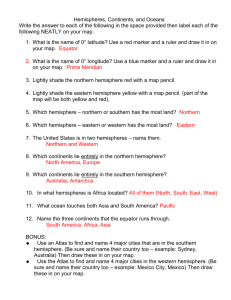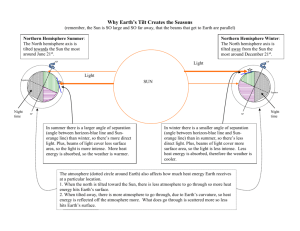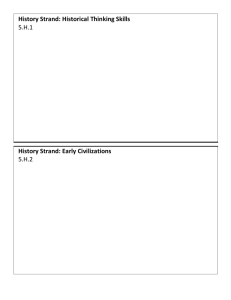ESE 148c Problem Set #2 (tentative)
advertisement
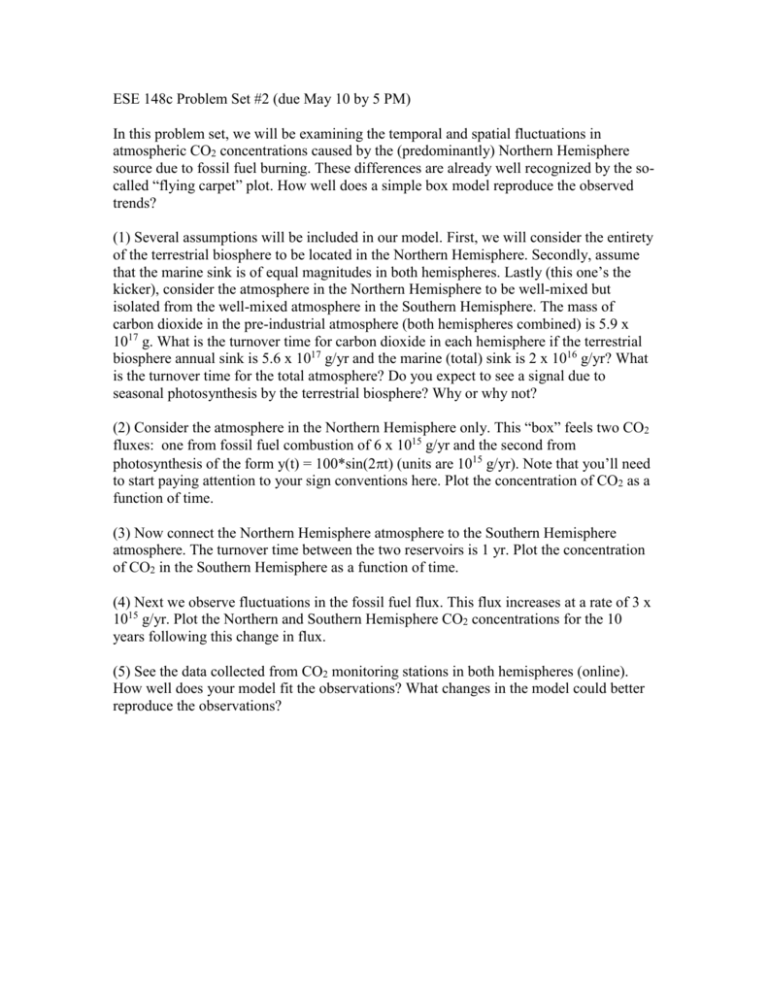
ESE 148c Problem Set #2 (due May 10 by 5 PM) In this problem set, we will be examining the temporal and spatial fluctuations in atmospheric CO2 concentrations caused by the (predominantly) Northern Hemisphere source due to fossil fuel burning. These differences are already well recognized by the socalled “flying carpet” plot. How well does a simple box model reproduce the observed trends? (1) Several assumptions will be included in our model. First, we will consider the entirety of the terrestrial biosphere to be located in the Northern Hemisphere. Secondly, assume that the marine sink is of equal magnitudes in both hemispheres. Lastly (this one’s the kicker), consider the atmosphere in the Northern Hemisphere to be well-mixed but isolated from the well-mixed atmosphere in the Southern Hemisphere. The mass of carbon dioxide in the pre-industrial atmosphere (both hemispheres combined) is 5.9 x 1017 g. What is the turnover time for carbon dioxide in each hemisphere if the terrestrial biosphere annual sink is 5.6 x 1017 g/yr and the marine (total) sink is 2 x 1016 g/yr? What is the turnover time for the total atmosphere? Do you expect to see a signal due to seasonal photosynthesis by the terrestrial biosphere? Why or why not? (2) Consider the atmosphere in the Northern Hemisphere only. This “box” feels two CO2 fluxes: one from fossil fuel combustion of 6 x 1015 g/yr and the second from photosynthesis of the form y(t) = 100*sin(2t) (units are 1015 g/yr). Note that you’ll need to start paying attention to your sign conventions here. Plot the concentration of CO2 as a function of time. (3) Now connect the Northern Hemisphere atmosphere to the Southern Hemisphere atmosphere. The turnover time between the two reservoirs is 1 yr. Plot the concentration of CO2 in the Southern Hemisphere as a function of time. (4) Next we observe fluctuations in the fossil fuel flux. This flux increases at a rate of 3 x 1015 g/yr. Plot the Northern and Southern Hemisphere CO2 concentrations for the 10 years following this change in flux. (5) See the data collected from CO2 monitoring stations in both hemispheres (online). How well does your model fit the observations? What changes in the model could better reproduce the observations?

